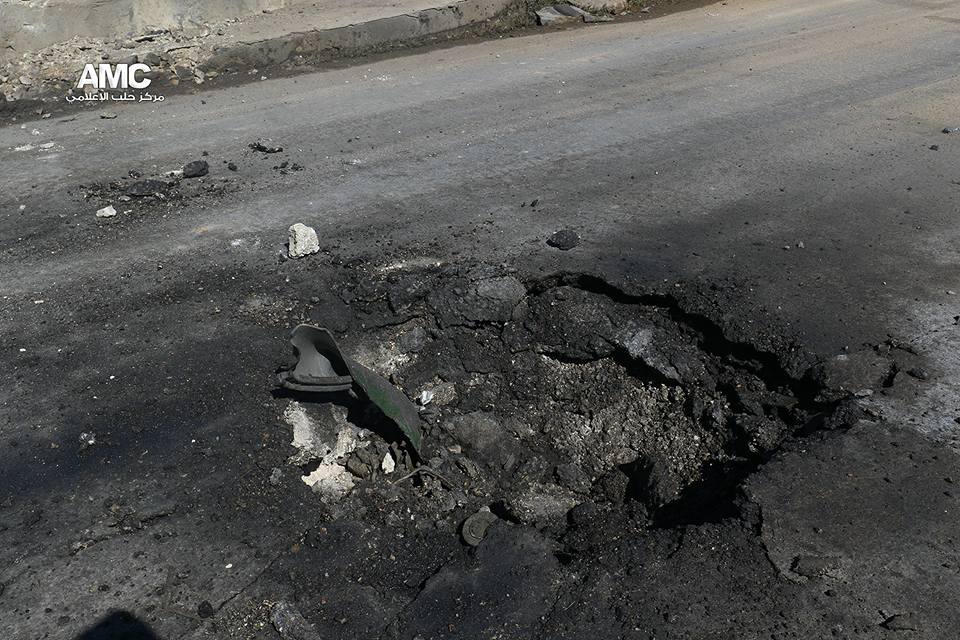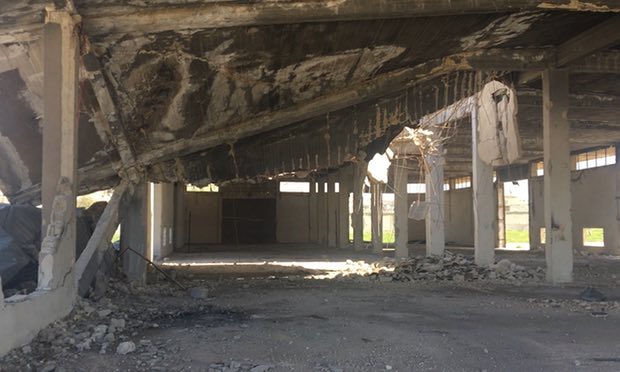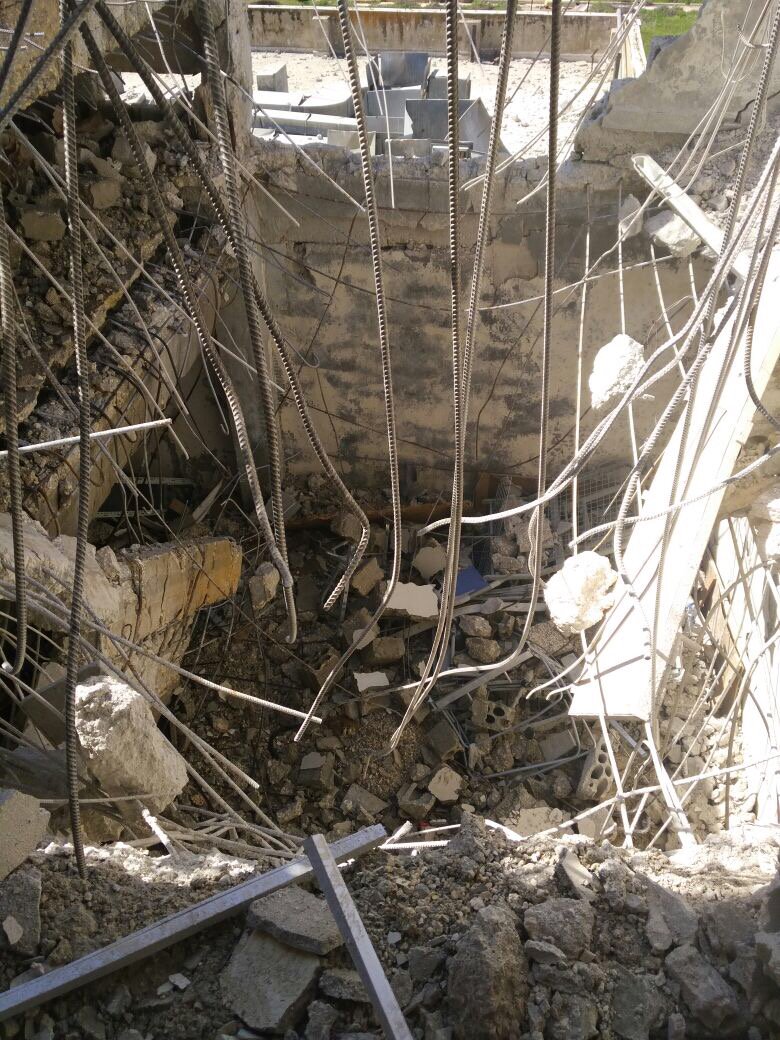Question
What caused the chemical calamity in Khan Sheikhoun on April 4, 2017?
05 Apr, 2017Hypotheses
Calculated Conclusions
Conclusions
1
2
3
A Syrian Army conventional bombing unintentionally released opposition chemical agents.
Summary
On April 4, 2017, Khan Sheikhoun, Syria came under attack. There were reports of dozens dead and hundreds injured, with those affected displaying signs of exposure to sarin.
(6th release, November 7, 2017 12:00 PM UTC):
The Rootclaim analysis finds that this was highly likely to have been a deliberate attack by the opposition. It is highly unlikely that this was a deliberate attack by the Syrian Arab Army (as claimed by the United States), or that a conventional bombing unintentionally released chemical weapons (as Russia and Syria had implied).
This revised outcome includes input from recently released HRC report 36/55 and the JIM report, and is based primarily on the following factors:
In considering the Starting Point there are hardly any useful statistics, as sarin attacks of this scale against civilians are very rare. In the most similar case (Ghouta 2013), Rootclaim's analysis found that the evidence strongly indicated it was an attack by the opposition. Key factors in that analysis were:
-
Rocket type, impact location and direction indicated that the launch was likely from opposition controlled areas.
-
UN laboratory findings suggested low quality, not industrially produced sarin.
-
Leaked, likely authentic, videos depicted opposition chemical rocket launches at the same time.
-
The opposition had used sarin on multiple occasions, one of them within days of the attack and in the same location.
Thus, the basis for the Starting Point leans moderately in favor of an opposition attack.
This inclination is strengthened when considering the further requirement that in order to carry out a chemical attack, the Syrian government would have needed to have successfully evaded the internationally supervised destruction of its chemical weapons arsenal, which was declared complete in 2015.
In evaluating the possibility of an unintentional release of opposition chemical weapons, the analysis considers the frequency of sarin use by the opposition, and the likelihood that a government attack could cause the chain of events necessary for an accidental sarin release. The result indicates that while requiring a rare coincidence, there were enough opportunities for this to occur, making it a viable option.
Subsequently, the specific evidence of this case is considered.
The key evidence:
-
Multiple hospital records showing that many sarin victims were admitted well before the aircraft took off reduce the likelihood that the attack was carried out by aircraft.
-
Munition remains found in a crater that is probably the sarin’s source are likely to have come from a surface to surface projectile shot from the north, which is much more likely if this was an opposition attack.
-
Radar data only shows a Syrian plane flying a significant distance away from the crater found in Khan Sheikhoun.
-
The government's initial reaction was to blame the poisoning on accidental release of chemicals following a conventional attack on an opposition warehouse. The timing provided for this attack was hours after the poisoning - a discrepancy that is more indicative of confusion than a cover up.
-
The lack of photos or other supporting evidence to show that there had been a chemical weapons facility in Khan Sheikhoun, months after the attack occurred, reduces the likelihood that this was an unintended attack on a chemical weapons facility.
-
Chemical traces from Khan Sheikhoun match traces found in previous attacks, indicating that the sarin was manually prepared, rather than accidentally being mixed following the bombing of a chemical warehouse.
-
Chemical markers reported by the
OPCW -UN Joint Investigative Mechanism are said to match the government stocks, increasing the likelihood of a government attack. This evidence is ultimately outweighed by the other factors, especially since the report provides only the positive matches, without the full chemical profile and the negative matches, which are necessary to assess the statistical significance of this finding. -
A Syrian / Russian attack on a hospital treating the victims and unconfirmed reports of figures associated with Syria's chemical weapons program being present that day increase the likelihood of a deliberate government attack (but are ultimately outweighed by the other factors).
Rootclaim will continue to incorporate and assess relevant evidence as it becomes available. Use the “Propose new evidence” option below to add information that is relevant to this analysis.
Key Evidence
Contribution
What was found in the crater in Khan Sheikhoun?
Remains of an aerial sarin bomb.
Remains of a surface to surface sarin projectile shot from the east, west or south.
Remains of a sarin improvised explosive device (IED).
Remains of something other than a sarin bomb, projectile or IED.
Remains of a surface to surface sarin projectile shot from the north.
The Syrian government acknowledged that they carried out an air strike in Khan Sheikhoun, claiming they hit a warehouse used to stockpile chemical weapons around 11:00 but implying that they did not carry out a strike at 6:30.
Videos taken in Khan Sheikhoun early that morning show four plumes of smoke which do not match the site of the crater found there, and in at least three of the sites, damage can be observed. There is a loud background noise on the video (which could be the sound of the explosions or could be the sound of planes) but there are no planes visible on the video footage.
Analysis
Evidence
Starting Point (1 item)
Attack sites (7 items)
Two weeks after the calamity, no evidence was found of chemical material being manufactured or stored in the area of the alleged contamination zone in Khan Sheikhoun, or of any activity to indicate hiding evidence.
A hospital in Khan Sheikhoun was partially destroyed in a bombing after the initial attack.
What was found in the crater in Khan Sheikhoun?
Remains of an aerial sarin bomb.
Remains of a surface to surface sarin projectile shot from the east, west or south.
Remains of a sarin improvised explosive device (IED).
Remains of something other than a sarin bomb, projectile or IED.
Remains of a surface to surface sarin projectile shot from the north.
Videos taken in Khan Sheikhoun early that morning show four plumes of smoke which do not match the site of the crater found there, and in at least three of the sites, damage can be observed. There is a loud background noise on the video (which could be the sound of the explosions or could be the sound of planes) but there are no planes visible on the video footage.
Syrian Government (2 items)
The Syrian government acknowledged that they carried out an air strike in Khan Sheikhoun, claiming they hit a warehouse used to stockpile chemical weapons around 11:00 but implying that they did not carry out a strike at 6:30.
Eyewitnesses (5 items)
First responders were already using the word "sarin" before the patients had even been brought to hospitals.
A nurse claimed to hear a thump but not an explosion at the time that a chemical attack allegedly occurred.
Syrian Air Maneuvers (3 items)
General Mohammed Hasouri was the pilot flying near Sheikhoun around 6:30 AM.
United States (2 items)
An unnamed US official claims that US intelligence intercepted communications featuring Syrian military and chemical experts talking about preparations for a sarin attack in Idlib.
An unnamed US official claims that a Russian drone flew over a local hospital as victims were being brought to the hospital.
Chemical findings (2 items)
Laboratory study indicates that the precursor chemical DF (methylphosphonyl difluoride) used in Khan Sheikhoun contained markers consistent with the original Syrian Army stock.
Diisopropyl methylphosphonate (DIMP) and hexamine traces were found in samples from Khan Sheikhoun.
Other evidence (3 items)
The day before the calamity, Feras Karam tweeted that he was about to start a media campaign on chlorine attacks.
Khan Sheikhoun was known as a relatively pro-Syrian government town and there have been pro-government spies and informants from Khan Sheikhoun.








Discussion
What was found in the crater in Khan Sheikhoun?